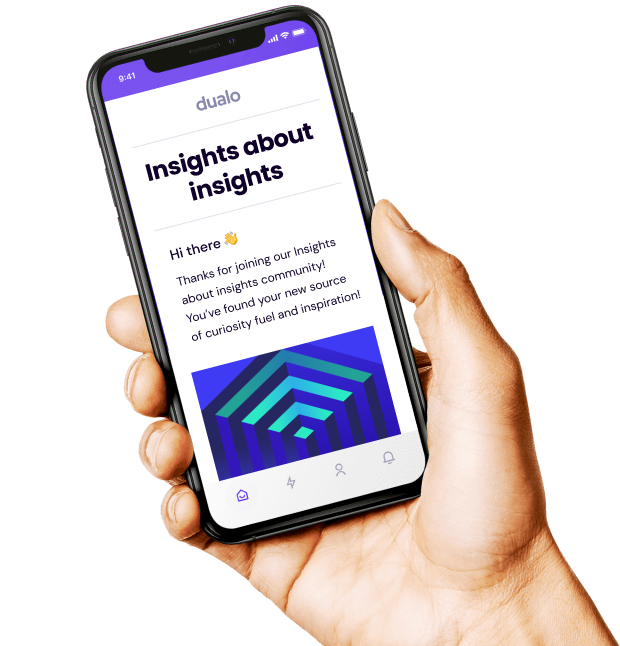How to measure and communicate research impact and ROI
In this article, we delve into the nuances of research impact and ROI, exploring how each contributes to the overall success of a business.


.jpeg)
In this article, we delve into the nuances of research impact and ROI, exploring how each contributes to the overall success of a business.

In the ever-evolving landscape of business and technology, research plays a pivotal role in driving innovation and growth. But one of the common questions that comes up during our online events and workshops is: “How do you define, measure and communicate research impact and ROI?”
This question highlights a critical need to distinguish between impact and return on investment (ROI) and understand their respective roles in maximising the organisational value of research. In this article, we delve into the nuances of research impact and ROI, exploring how each contributes to the overall success of a business.
The reality is that research impact can take many forms, it's not one-dimensional. Unlike ROI, which is often quantifiable in financial terms, research impact encompasses a broader spectrum of benefits that can be both direct and indirect in their nature.
Here are some of the key forms that research impact can take within an organisation:
⚡ Influencing product features
Combining user interviews, surveys, user feedback, and usage analytics to inform the development of new features, leading to products that better meet customer needs.
⚡ Improving the user experience
Continuous research and discovery allows for ongoing optimisation and improvements to the user experience of a product, helping to make these more user-friendly and increase customer satisfaction.
⚡ Influencing the product roadmap
Strategic planning of product development is heavily informed by research, ensuring alignment with user expectations and business goals.
⚡ Prompting cross-team collaboration
Sharing research and insights across teams helps to break down knowledge silos across the wider organisation and encourage departments to work together towards common goals.
⚡ Prompting further research
Newly discovered research insights can inspire more in-depth studies, helping to foster a culture of continuous learning and improvement.
⚡ Streamlining new joiner onboarding
Access to key insights helps provide better onboarding processes for new employees, streamlining their integration and productivity.
⚡ Increasing wider engagement with research
Demonstrating the utilisation of research across teams, encourages more stakeholders to engage with research insights as part of their decision making process.
⚡ Improving stakeholder understanding of users
Sharing detailed user insights (consider the ‘know what, so what, now what’) to develop a clearer understanding around what to consider next among stakeholders - leading to more user-centric decisions across the organisation.
⚡ Influencing org-wide strategy
Research insights can be used to inform and shape key business decisions, to ensure that an organisation's strategic direction aligns with user needs and market demands.
The list of research impact examples is extensive, and each organisation might experience these benefits differently. The essential takeaway is that research impact can take many forms, and is about maximising the amount of positive change that resonates throughout an organisation, helping to foster a culture of user-centricity and continuous improvement.
✏️ Reflect and React
Which examples of research impact are you currently experiencing at your organisation? Take a few minutes to write these down. Also highlight the areas of impact that you’re not currently driving with your research today. Spend some time thinking about what you might be able to do next to improve in these areas within the next quarter.
While research impact focuses on how research is being used across an organisation, ROI focuses on the measurable financial benefits that research brings to the business - typically associated with how research contributes to metrics related to top-line growth or bottom-line cost reduction.
There are 5 key growth metrics that most businesses care about:
📈 Acquisition
How effectively the organisation attracts new users to its products and services. Research can be used to identify the most compelling use cases, features, and marketing messages to help the organisation reach more potential customers.
📈 Activation
The process of onboarding new users and maximising the value provided in their initial engagement. Research insights can help with designing seamless onboarding experiences that quickly demonstrate value to new users.
📈 Retention
Strategies to encourage ongoing usage and minimise customer churn. Understanding user behaviours and pain points enables the development of features and services that keep users coming back.
📈 Revenue
How the organisation monetises the usage of their products and services. Research can help identify opportunities for new products and services, as well as upselling existing customers, and optimising pricing and checkout journeys.
📈 Referrals
The extent to which users recommend your products or services to others. Satisfied users become advocates, helping to drive organic growth through word-of-mouth.
The bottom-line of a business is typically impacted by how well you’re organising your research findings across teams, to streamline the process of finding existing insights, and reducing the amount of duplicated research efforts across the organisation.
But research can also influence the bottom-line by improving how wider teams operate e.g. by helping to shorten product delivery life cycles, or reducing the number of customer support tickets as a result of an improved user experience for your products and services.
Tracking ROI involves mapping your research insights to the top-level growth metrics above, or the impact that your research is having on the bottom-line across teams.
✏️ Reflect and React
Are you able to capture what research you already hold around the 5 key growth metrics detailed above? How about the influence your research has had on the bottom-line for your organisation? Are there any gaps highlighted in your knowledge base from doing this, which you might want to dive deeper into as part of an upcoming study?
Reporting on impact helps with advocating for research across an organisation, but reporting on ROI allows you to:
✅ Demonstrate more clearly the value proposition for research
By linking research insights to business metrics, you can more clearly demonstrate the tangible value that research brings to the organisation (and where the research team should focus their efforts next).
✅ Elevate your team to more of an advisory role within the business
Research teams that effectively communicate their ROI are more likely to be recognised as strategic advisors within the company, by showcasing how research can be used to influence key decisions.
✅ Secure increased funding or headcount for the research function
Demonstrating a high ROI for your research can help you with securing additional resources, enabling the research function to scale and further its impact across the company.
✏️ Reflect and React
Consider creating a simple impact tracker spreadsheet that you can use to capture the impact and ROI of your key research insights, noting down the type of impact this insight has had and how this impacts the top-line and bottom-line for your business.
You can then use your impact tracker to share regular research case studies that showcase the strategic outcomes of your research as this is utilised across the organisation.
Understanding the difference between research impact and ROI is crucial for maximising the perceived value of user research within an organisation.
And while conducting research encompasses a broad range of benefits that improve organisational processes, culture, and strategy, measuring and reporting on ROI focuses on showcasing the measurable financial returns influenced by your research activities.
This not only helps to advocate for the importance of research but also helps to elevate the research team to a more strategic role within the company, allowing teams to make a stronger case for securing increased resources and support.
As organisations continue to evolve, the ability to clearly articulate and demonstrate both research impact and ROI will be key to driving sustainable growth and success.
Join our growing community and be the first to see fresh content.
.svg)
Repo Ops ideas worth stealing
.svg)
Interviews with leaders
